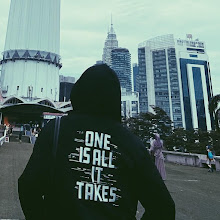In the wake of the brouhaha of the ‘Malaysian solution’ in Australia, I feel compelled to write about something ‘cinematic’ vis-a-vis Malaysia-Australia relations or connection. Among the earliest on-screen images of Australia that I viewed when I was growing up were scenes from the yawn-inducing Australian television drama series The Sullivans screened on our national TV RTM in the 1980s. The Sullivans depicted a middle-class Melbourne family and the repercussions that World War II were having on their lives. I also managed to see the few Australian films that reached our local cinemas including the Mad Max film series, especially the second and third sequels The Road Warrior and Mad Max: Beyond the Thunderdome and the popular ‘low-brow’ comedy Crocodile Dundee starring Paul Hogan. I began to view more Australian films in the 1990s when a host of films, e.g., Strictly Ballroom, Proof, Shine, Sweetie, The Adventures of Priscilla: Queen of the Desert and Muriel’s Wedding received international acclaim.
Speaking of Malaysia-Australia connections, I recall seeing an old British film titled A Town Like Alice (1956, starring Australia’s Peter Finch and England’s Virginia McKenna) which was set in both Malaya and Australia during World War II (I remember vividly one of the scenes in which the female protagonist, a young British woman, witnessed a group of villagers performing the traditional dance joget in a Malay kampong). Before I highlight Australian films that directly depict – and deal with – Malaysia, let me first discuss a Malaysian film of the 1990s that partly rendered some Australian connection. The film was Selubung (Veil of Life, 1992, directed by Shuhaimi Baba), one of several Malaysian films of the 1990s that I enjoyed, along with Ringgit Kasorrga, Hati Bukan Kristal, Fenomena, Bintang Malam, Perempuan, Isteri & Jalang, Amok, Sayang Salmah, Layar Lara, Perempuan Melayu Terakhir and Jogho. I was generally proud of them due to the fact that in the 1990s these were among local films that dared to be different while offering something substantial or provocative. I recall being really excited when Selubung came out due to, among other things, its ‘global’ or ‘international’ appeal, particularly its concern with the plight of the Palestinians.
Selubung focuses on the metamorphosis of the central character Mastura (Deanna Yusoff) from youthful naivety to maturity, a metamorphosis symbolised by a swarm of butterflies that magically engulf her first when she is young (at the beginning of the film) and later when she is an adult – while badly-injured, in a coma and bed-ridden in a hospital (towards the end). Mastura is in Perth, Australia pursuing her tertiary education with her other Malaysian friends. Her close friend EJ (played by the young Ida Nerina) is enmeshed in an Islamic missionary group led by Brother Musa (Harith Iskandar) who she later marries (as his second wife). The burqa-clad Hani, Musa’s first wife, becomes tormented and psychotic, leading her to murdering EJ’s newborn baby. Upon completing their studies, Mastura’s other good friend Halim (Jit Murad) volunteers to work as a doctor in Lebanese refugee camps while Mastura returns to Malaysia where she falls in love and enters into a happy relationship with her employer Kamal (M. Nasir). Mastura learns that EJ has returned to Malaysia feeling traumatic after her child’s death and after her husband Musa leaves to join Halim in Lebanon. In KL, she joins the Rescaid Organisation managed by a hard-hitting Palestinian woman, Dr. Sardar. Mastura, Dr Sardar, EJ and some other friends decide to organise a charity concert for Palestinian children. While busy organising the concert, Mastura meets with a tragic accident in a bomb blast that kills an arsonist from Sydney whose aim is to destroy the Kuala Lumpur Rescaid office.
The connection with Australia is established and emphasised at the film’s beginning and ending. The film shows a group of Malaysian students at the University of Western Australia, including Mastura and her friends, confronting an Islamic missionary group led by Brother Musa who proselytises (and preaches) Islam around the campus. The film’s opening sets a sinister tone alerting viewers to the notion that ‘Islam is in danger.’ One of the earlier scenes shows several Malaysian students, along with a few European students, watching television in a viewing room showing images of Palestinians being threatened. An unknown character sprays-paints “Arabs go home” on a wall of a Sydney mosque and throws gas on a framed quotation from the Qur’an and on a number of other books. Finally, they set the room on fire.
The film’s opening implies and positions Australia as an unsafe and daunting place for Muslims. Selubung does not deal with specific Australian issues or Australian-ness but attempts to situate Australia as an appendage of the West’s growing anti-Islam sentiment. The bombing of the Rescaid headquarters in KL seems to reverse the stereotyped association of violence with Islam often trumpeted by the Western media. To a certain extent, Selubung seems to subscribe to – and be trapped within – the Western discourse on Islam by dichotomising the extremist/ fundamentalist Islam (represented by Brother Musa) and the moderate Islam (represented by Mastura and her friends); however, this demarcation becomes blurred when they behave like good Samaritans helping the Palestinian refugees. The film’s conspicuously ‘global’ or ‘international’ appeal lies in its interweaving of scenes and issues that straddle Australia, Malaysia and Lebanon.
It is interesting to note that within the same year as Selubung was released, the whole of Malaysia was shocked and angered by the controversial issues surrounding an Australian film titled Turtle Beach (1992, directed by Stephen Wallace). The film, which was based upon a novel by Blanche d’Alpuget, depicted Malays massacring Vietnamese refugees who were trying to land on Malaysian beaches. In Malaysia, people would generally regard a film like Turtle Beach as another attempt by the West to ‘demonise’ the East. This tendency may be seen as an example of ‘Orientalism,’ as defined by prominent postcolonial thinker Edward Said, i.e., a mythical construct of the Orient (the East) or a Western style of dominating, restructuring and assuming control over the Orient. According to Said, this tendency was deeply rooted in the cultural logic of the imperialist/ colonialist conquest of the East, and its trade in images of a violent, mysterious, exotic, backward region and people.
Turtle Beach was followed by several Hollywood films seemingly aiming to smear or tarnish Malaysia’s ‘official image.’ One among these films, Return to Paradise (1998), depicted two hedonistic American backpackers who had been arrested and sentenced to death for drug smuggling. Most of the scenes were filmed in Thailand; but, in essence, focus was upon presenting a critical view of the Malaysian legal system. Another film was the superficial Bond-like romantic thriller Entrapment (1999) featuring Sean Connery and Catherine Zeta Jones. The Malaysian media helped spark the controversy that surrounded the film by drawing the public’s attention to scenes wherein the ultra-modern Petronas Twin Towers were juxtaposed against images of riverside ‘slums’ in the town of Malacca. This swiftly prompted the then Prime Minister Mahathir Mohamad to criticise and hit out at Hollywood’s misrepresentation of the building.
Personally, I did not see Entrapment’s ‘misrepresentation’ as particularly negative or extreme when compared withTurtle Beach’s depiction of multiracial Malaysia in the 1970s (even the riverside ‘slums’ in Malacca that appeared in Entrapment may have appeared exotic – in a positive sense – to many viewers outside of Malaysia). Turtle Beach was a different case in point. A political thriller set during the post ‘May 13’ racial turmoil, its focus was on Australian photojournalist Judith, who travels to Malaysia to report on the Vietnamese boat people seeking refuge in Pulau Bidong. She bestfriends a beautiful Vietnamese former callgirl named Minou (played by Joan Chen), who is married to the Australian ambassador and hopes to utilise her husband’s power and money to find her own lost children among the refugees; but, each new boatload of Vietnamese is met by violence from the ethnic Malays. In the meantime, Judith falls in love with a Malaysian Indian man. In time, Minou’s desperate search leads her to sacrifice herself to save her children from a Malay mob.
What seemed shocking was that, unlike the novel, the film went the extra mile depicting barbaric acts by the Malays and showing Vietnamese refugees being treated like animals. The film’s deliberate attempt to provoke can be seen during its opening scene which implied Malaysia’s 1969 racial riots, with the pre-credit sequence showing a caption that read: “State of emergency ... Malay racial hatred explodes against Chinese and Indian minorities.” Then, viewers see a Chinese cook chopping the head off a slaughtered pig juxtaposed against shots of explosions (bombs being thrown into cars and buildings), leading to a shot of the Chinese cook throwing the pig’s head into the Malay (Muslim) crowd, which then proceeds to chase him and his fellow Chinese. Then, the viewers are introduced to Judith, the Australian photojournalist, who is busily photographing these events. Several Australian scholars and critics have conjectured that the negative and limited representations of Asians in dramas and films made by Australians (such as the ABC television drama series Embassy [1990-1992] and feature films Turtle Beach and The Year of Living Dangerously [1982]) may have been attributable to the Australians’ collective resistance to the Asian presence in general (even Embassy stirred up controversy when the Malaysian government thought that the fictitious country it depicted – ‘somewhere in Southeast Asia’ – was a disguised version of Malaysia).
Turtle Beach was generally panned by Australian critics not only on the grounds that it was ‘historically and culturally inept’ (an Australian critic called it ‘a ludicrous film’) but also due to its poor quality, both technically and aesthetically. It is not known whether the controversy surrounding its release or its negative critical reception contributed to its commercial failure. As reported, many expressed how appalled they were at the film’s insensitive handling of the refugee issue considering Malaysia’s good track record in terms of handling refugee camps, which were generally considered among the best run and most agreeable in Southeast Asia. That said, the film has to a certain extent distorted Blanche d’Alpuget’s much better novel. In an interview, d’Alpuget suggested that the furore was not only entirely instigated by the press but was forced on Mahathir by the Australian press irrespective of the fact that the controversy could result in a bad outcome for Australia. It was also reported that the film’s producer was desperate to see Turtle Beach achieve the same success and acclaim as the British film The Killing Fields (1984), a very emotional and terrifying examination of Cambodia in the aftermath of the American evacuation.
Another Australian film that I viewed recently was Dadah is Death (1988) which bore a similar theme to Hollywood’sReturn to Paradise (although the former was in some ways better than the latter in terms of representations). Initially released as a four-part television miniseries, Dadah is Death was based upon the true story of two Australian men, Kevin Barlow and Brian Chambers, who were hanged by the Malaysian government for drug trafficking in 1986. The then Australian Prime Minister Bob Hawke, who had made a last minute appeal to Malaysia for clemency, later described the hanging as ‘barbaric,’ a comment which, in effect, strained relations between Australia and Malaysia. In response to Hawke’s criticism that no one has the right to take another’s life, Malaysian Prime Minister Mahathir replied that Mr. Hawke should instead direct his comment to the drug traffickers. Mahathir also criticised Hawke’s use of the word ‘barbaric’ asserting that hanging as a method of executing criminals actually originated in the West.
Dadah is Death’s focus is on Kevin Barlow and his mother’s (powerfully played by British actress Julie Christie) all out efforts to save her son’s life. The film begins on the eve of the two men’s schedule hanging in Kuala Lumpur; then, it flashes back three years to Australia, introducing the viewers to the protagonists before they had met each other. Kevin, a welder, had been involved in petty crime while Brian was an urban building contractor. Both were arrested while trying to smuggle heroin out of Penang Airport in Malaysia in November 1983. Dadah is Death was intended to be a harrowing account of a working-class mother, who had to nurse a sick husband and a brain-damaged younger son. Mrs Barlow had even had to organise fundraisers to pay her air fare to Malaysia to attend her son’s trial. She also hired lawyers, appeared on Australian talk shows, and wrote a book about her son’s ordeal while at the same time sending telegrams to the Pope, Margaret Thatcher, the Queen of England, Australia’s foreign minister and the United Nations, begging for help to release her son. While in Malaysia, she hired a Malaysian journalist to help her draft a letter to theYang Dipertuan Agong (King of Malaysia). Somewhat more interestingly, the film shows Mrs Barlow contacting a British mercenary, a retired air force officer, who offers to break into Penang jail and free her son. She was willing to take the risk, but could not afford the price the mercenary demanded ($60,000).
Dadah is Death attempts to show Kevin Barlow in a more sympathetic light, portraying him as a victim of circumstances, a naive country boy. It is not known whether or not Australian viewers sympathised with the two condemned heroin traffickers, in particular with Kevin Barlow. But, as the film portrayed, the Australian people seemed to agree with the Malaysian court’s decision. An Australian poll taken at the time showed that 60 percent of those surveyed favoured sending Kevin Barlow to his death, to the painful consternation of the mother. In one of the film’s significant scenes, a stranger (woman) grabs Mrs Barlow’s arm and says: “My daughter died of a heroin overdose last year. Why should my daughter die and your son live? I’d pull the switch myself!” The film also explores a certain bonding between Mrs Barlow and the Malaysian attorney Karpal Singh (played by British actor Victor Banerjee). However, I was not convinced by the performance of Sarah Jessica Parker (of Sex and the City fame) as an American anthropologist who went beyond expressing her compassion for Kevin to eventually fall in love with him – a romantic subplot that seemed both contrived and forced.
Many Malaysians would have condemned Dadah is Death and Turtle Beach had they viewed both films. But, I still believe that we should read them in a more ‘give and take’ manner while attempting to understand these films’ politics of representations concerning race, gender and nationality. Even the provocative Malaysian film Selubung, that attempted to reverse certain stereotyped perceptions of Islam (particularly Muslims as terrorists), was not without its problems (as mentioned earlier). On the one hand, films such as Turtle Beach continuously render an ‘orientalist’ complex in which ‘the East’ is passively re-created in/through the imaginings of an all-powerful ‘West.’ On the other, if we merely resort to crude forms of condemnation and criticism of ‘Western’ (mis)representation, we will only debunk and reinforce our (post) colonial fears and anxieties of being seen as ‘underdeveloped,’ ‘backward’ and ‘less-than-modern.’ Furthermore, we should be cognisant of the fact that not everything in this world is neatly and fixedly constructed according to Manichean divide or dualism, notions we may have been made (or encouraged) to believe, e.g., pertaining to East vs West and fundamentalist Islam vs moderate Islam. These binary patterns, which are often re-constructed and re-imagined through/on screen, should be perceived and responded to with more critical and rational minds.
***

by Norman Yusoff is currently researching and writing about Malaysian cinema. In his spare time, he enjoys viewing silent movies and listening to Indian ghazals.
p/s: very interesting review by Norman Yusoff. I loved this article.. thanks!























.png)
.png)
.png)
.png)
.png)
0 Ulasan